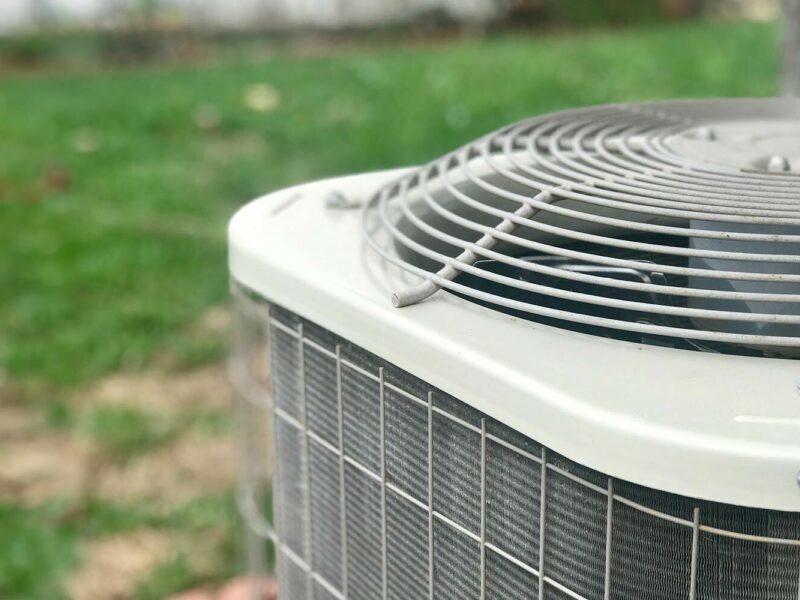Article Excerpt
What do you do when it’s summer in Texas and your A/C goes out? Read to learn some tips for how to get the air moving through your house to keep it cool.
An early summer heat wave has caused temperatures across Texas to rise above 100 degrees multiple days in a row. Texans are used to the heat, but sometimes it can be too much. We’re also quite dependent on air conditioning to stay cool in the summer months. A/C has been around for about a century now, with Texas helping to lead the charge to install A/C systems in every possible building.
Few people remember a time when it was uncommon to see air-conditioning, so what happens when the A/C goes out? This could be because of a power failure that knocks out all electricity in a home, or it could be a problem with the A/C unit itself. The following tips can help you stay as cool as possible until power is restored or someone comes to repair your A/C.
What to Do to Stay Cool if the Power Goes Out
If you or your loved ones are in a dire situation and heat-related illness is threatening (especially to the elderly) call 9-11. Otherwise, search online for “cooling centers” in your city. These are indoor facilities with A/C that will allow displaced residents to spend time as they wait for their home systems to be repaired. Ask a city employee about heat relief efforts currently being provided for the city government. In Texas, cities will sometimes provide portable AC units for vulnerable populations. Also call a licensed HVAC specialist right away to get on their schedule for repairs.
If you opt to stay home, open windows and/or doors to create a cross breeze. As air passes in one opening and out another, it will make the space feel cooler. Hanging a wet sheet over an open window can also produce a cooling sensation. If all else fails, a cold bath or shower could help.
![Photo by Bradley Gordon on Flickr [Creative Commons] AC unit in a window](/images/articles/_generalPhotoStandard/ac-window-unit.jpg)
Photo by Bradley Gordon on Flickr [Creative Commons]
What to Do if the A/C Goes Out, but the Power Stays On
If you still have power, but no A/C, you can cool a room down by opening some windows, closing other windows, and running some fans. Homes with good insulation should be able to retain cool temperatures from the A/C for a while, but without air circulation, a house can start to feel stuffy and hot.
Start by covering windows that could cause the house to heat up. Windows that directly face the sun are usually the worst.
There are several kinds of fans you can use in this situation:
Window Fans: These are designed to fit in an open window frame, much like a window A/C unit. They can draw air in from outside or push inside air out. You only want to use window fans when the air outside is cooler than the air inside. During summer in Texas, that’s only going to be the case at night, if at all. If you have two windows and two window fans, you can use one to blow cooler air into the house and the other to blow warmer air out. Since hot air rises, this works best if you live in a two-story home. Window fans upstairs can blow hot air out as window fans downstairs blow cooler air in.
Box Fans: These look exactly like their name — fans inside large plastic or metal boxes. They are useful for recirculating air around a large area. You can also use them in place of window fans if you don’t have any actual window fans. You just need to watch for gaps between the fan and the window frame where cool air could leak outside.
Ceiling Fans: These are fixtures that you cannot move from one room to another. They can circulate air to create a cooling effect on people. Be sure the fan is rotating counterclockwise.
Tower Fans: These are tall, narrow fans that can oscillate from side to side to produce airflow.
Exhaust Fans: If you have exhaust fans above your stove or in bathrooms, they can help by removing warm, humid air from the house.
Keep in mind that fans, by themselves, do not actually lower the temperature in a room. All they can do is circulate air. This can be enough, though, to create a cooling sensation. Fans blow away the air that settles around a person, allowing the skin to cool as sweat evaporates.
You can use a fan to temporarily lower the temperature if you have some ice. Place the ice directly in front of a box fan or tower fan. The ice will cool the air from the fan as it passes over. This can be especially helpful during the hottest parts of the day. You can achieve a similar effect by hanging a wet sheet over an open window or over a fan.
![Photo by Christopher Sessums on Flickr [Creative Commons] outdoor ceiling fan](/images/articles/_generalPhotoStandard/outdoor-ceiling-fan.jpg)
Photo by Christopher Sessums on Flickr [Creative Commons]
Other tips to help stay cool include the following:
Drink lots of water.
Take cold showers or baths if you feel overheated.
Don’t cook anything inside.
Close the doors to rooms that no one is using. That will save the cooler air for the spaces you are occupying.
If your bed feels too hot, find somewhere lower to sleep. This could mean placing a mattress on the floor or, if your bedroom is on the second floor, sleeping downstairs.
Call for emergency A/C repair as soon as you can.
What did people do before A/C?
You’re probably wondering how people managed to survive without air conditioning for all of human history up until the last century. There is no single answer to that question, but part of it has to do with how they designed buildings. Old houses and other buildings were designed with airflow in mind. By opening windows in these buildings, you can create cross breezes that make the space quite comfortable.
You might have noticed that many old houses have high ceilings. Warm air has more room to rise in high-ceilinged rooms, allowing more cool air to gather near the bottom, i.e. where the people are. Some new houses have high ceilings, but they’re often limited to the living room and a few other spaces. Bedrooms tend to have 8- to 10-foot ceilings.
There are several reasons why home builders began lowering ceilings. One was that low ceilings use less materials, so they’re less expensive. Another reason is that many people believed high ceilings were no longer necessary thanks to air conditioning. Most of the time, they’re right. When they’re wrong, though, it can get pretty uncomfortable.
![Photo by Larry Syverson on Flickr [Creative Commons] exterior photo of an older house with tall ceilings](/images/articles/_generalPhotoStandard/house-tall-ceiling.jpg)
Photo by Larry Syverson on Flickr [Creative Commons]
Looking to move to Texas?
Don’t let the heat scare you off... or the cockroaches... or the scorpions. Jokes aside, Texas is a fun and profitable place to take your career and family. The mortgage advisors at The Wood Group of Fairway help Texans buy homes every day, whether they’re moving here from across the country or just across town.
See which mortgage options you qualify for by answering a few easy questions online!



